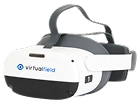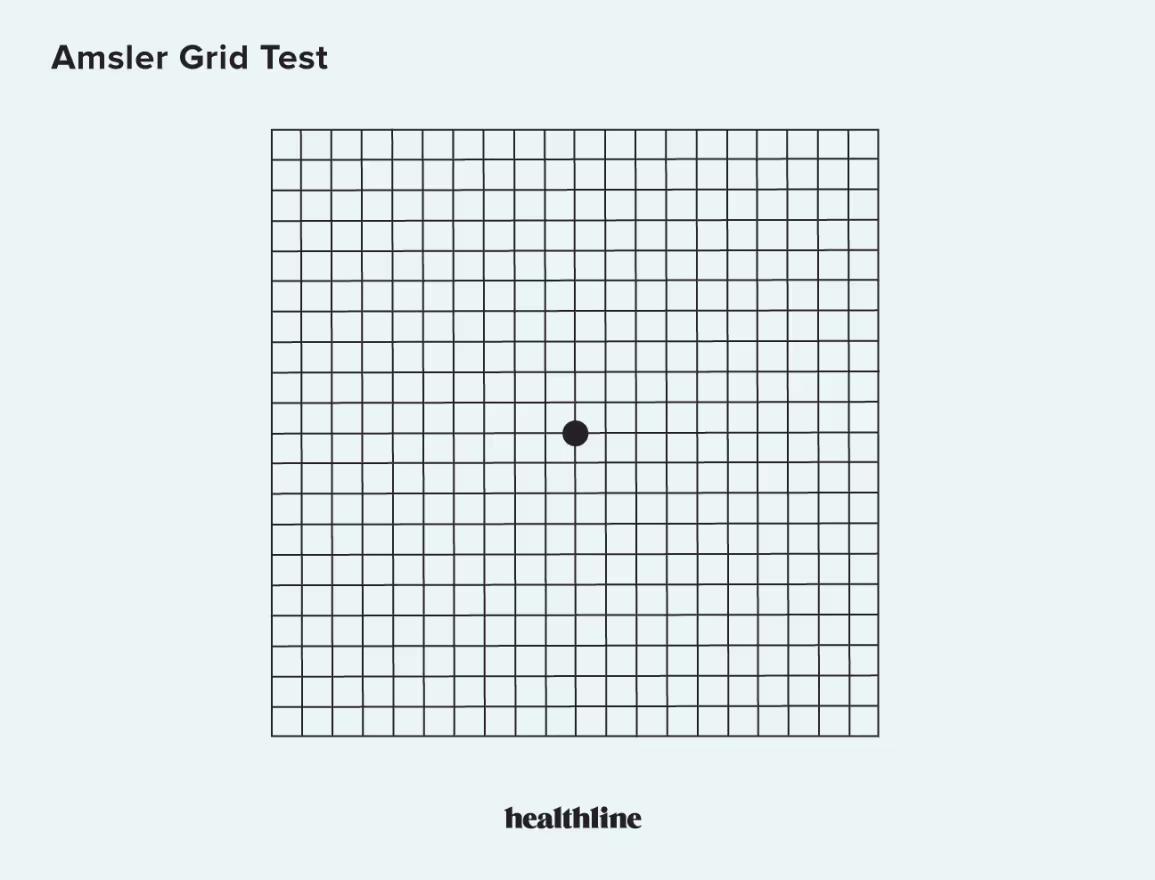The Amsler grid test is impressively simple and ideal for macular degeneration home monitoring. A 20 x 20 grid with a singular central spot, this early AMD screening tool can help identify changes in central vision caused by macular degeneration or visual pathway abnormalities — even when symptoms are subtle.
Amsler Grid Overview
Developed by Swiss ophthalmologist Marc Amsler in the 1940s, the Amsler grid is a square chart of horizontal and vertical lines with a central fixation point. It tests the integrity of the macula and the surrounding central retina, as it’s particularly sensitive to disruptions in the retinal pigment epithelium or photoreceptor alignment.
To conduct the exam, ask patients to look at the central dot, one eye at a time. They should report any irregularities in the surrounding lines, like waviness, blank spots, or areas that appear dim or blurry. From there, you can continue testing for macular degeneration or other macular conditions.
Academic references and clinical validation
The Amsler grid has a sensitivity of 62.7% and a specificity of 68.4%. Despite these gaps in testing ability, it remains one of the most well-known and easiest-to-administer screening tests today.
The Amsler grid layout is similar to Gestalt optical illusions, and recent research suggests that this test triggers a “filling in” phenomenon, which can lead to false negatives.
A recent study highlighted that although the Amsler grid is accessible and easy to use, its sensitivity is low and nonspecific, making further testing mandatory.
Virtual Field is proud to be the most trusted virtual visual field provider in the United States and Canada.

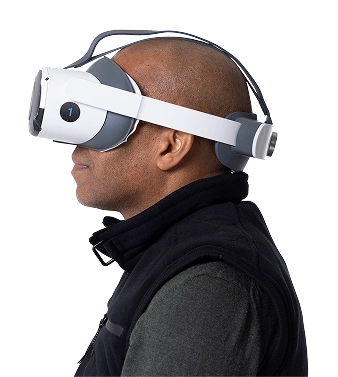
30 days free.
No strings attached.
We are confident you’ll love Virtual Field just like the 2,000 doctors who have already made the switch.
The Amsler Test at a Glance
For patients without macular conditions, Amsler grid lines appear straight and uninterrupted. When the macula is damaged, some areas appear warped, missing, wavy, blurry, or even discolored. AMD-related structural changes, such as drusen deposits, distort the way light is detected and processed in the central retina. This information reveals physiological blind spots within the central 10 degrees, but provides no insight into peripheral vision. Eye care providers appreciate how quickly and easily they can get a general idea of the progress of AMD. Still, the rate of false negatives and lack of specificity can leave many questions unanswered.
Patients might notice a range of aberrations such as the following:
• Metamorphopsia: Lines appear bent, wavy, or curved
• Scotomas: Missing or darkened areas in the grid
• Micropsia or macropsia: Lines appear squashed or spread apart
• Blurring: Areas that appear foggy or smudged
Patients who take this test at home should mark areas of concern directly on a printed grid and bring the results to their appointments for your evaluation.
Pros and cons of Amsler Grid Testing
The pros and cons that follow can help guide you toward the ideal scenarios to incorporate this test into your patients' diagnostic assessments.
Pros
Testing is quick, low-cost, and universally available.
Patients can complete this non-invasive test at home for self-monitoring.
Amsler grid testing can (and should) be done frequently for patients with AMD.
Cons
Patients must have a clear understanding of how to conduct the exam and how to report irregularities.
Results are inherently subjective, unquantifiable, and dependent on the patient’s interpretation and focus.
Amsler testing can miss subtle visual disturbances or peripheral changes.
List of Ocular Diseases Monitored and Diagnoses Identified by Amsler Testing
Age-Related Macular Degeneration
The Amsler grid is practically synonymous with early AMD screening tools. AMD patients repeat this test to measure and monitor scotomas.
Central Serous Chorioretinopathy
This common condition is characterized by fluid accumulation under the retina that can alter the contour of the macula, causing wavy or blurry zones that the Amsler grid may help pinpoint.

60+
Macular Degeneration is the leading cause of vision loss in Americans aged 60 and older
2.5M
AMD affects 2.5 million Canadians
Macular Edema
Branch retinal vein occlusion (BRVO) and central retinal vein occlusion (CRVO) can cause localized or widespread visual field defects. The N-30 can detect relevant abnormalities in screenings and follow-up exams.
Stargardt Disease and Other Hereditary Maculopathies
In progressive retinal dystrophies that affect the central retina, Amsler testing can help in the early detection of central field defects and tracking of functional changes.
Example Amsler Grid
30 days free.
No strings attached.
We are confident you’ll love Virtual Field just like the 2,000 doctors who have already made the switch.
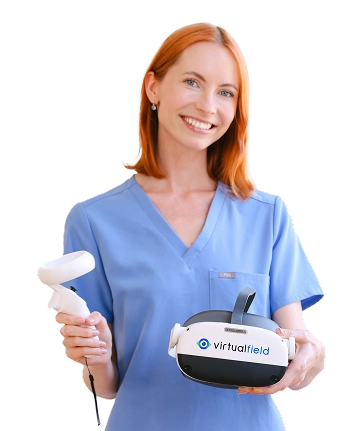
Billing and Coding for Amsler Tests
This test usually fits into an extended visual field exam, which is billable using CPT code 92083, or a routine screening (CPT codes 92004 and 92014). The Amsler grid test isn’t separately billable. Reimbursement varies greatly and depends on your practice’s location, setting, and the precise type of exam you’re providing.
When is the Amsler test required?
Patients who are diagnosed with or are at risk for macular degeneration, central serous retinopathy, macular pucker, diabetic macular edema, retinal diseases, or macular injury will need this test. It’s often recommended for patients with known AMD to use this test to monitor their condition daily.
Is Amsler testing required for driver’s licenses?
Patients with macular degeneration can often continue driving, even if they experience blind spots and visual disturbances. In the United States, each state sets a minimum for visual acuity, and many also have requirements for visual field perception. Esterman exam results are usually sufficient.
Complete Your Comprehensive Exams with Virtual Field
Consider the Amsler Grid just one component of a comprehensive eye exam. Eye care professionals will also need to interpret the patient’s experience, conduct further testing, and make an appropriate treatment plan.
Virtual Field’s visual field tests can provide more insight and help monitor disease progression. You can add Virtual Field to your testing routines for comprehensive, precise, and patient-friendly eye exam experiences on a larger scale.
Want all 23 exam guides in one place?
Download our comprehensive guide for 160+ pages of insights.
FAQs
1. Is an Amsler grid reimbursable as a stand-alone test?
2. What early AMD signs appear on Amsler?
3. How often should high-risk AMD patients self-test with an Amsler Grid?
4. What constitutes a significant change on follow-up?
5. Why doesn't Virtual Field offer an Amsler Grid test?
Ready to get started?
Schedule a demo or begin your 30-day free trial of Virtual Field to try our EOM exam in your practice.
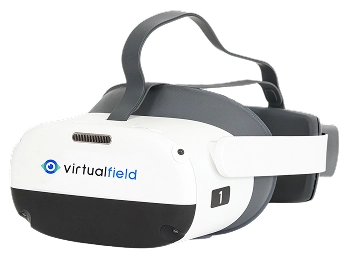
Questions? Contact sales@virtualfield.io talk to a Virtual Field expert today.

